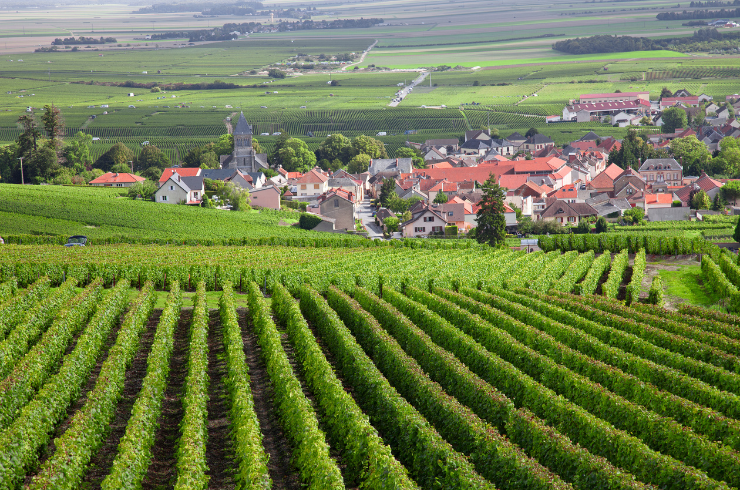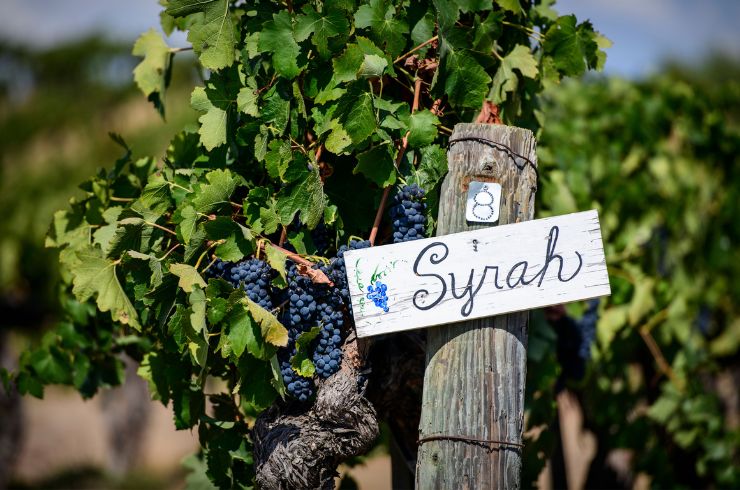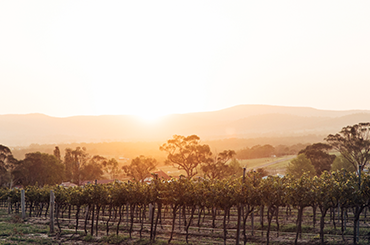I recently returned from McLaren Vale, my favourite region in Australia due to its seaside location, the relaxed atmosphere, good people and the polyglot of meso-climates and geologies that fuel the charge of grenache and its Mediterranean picadors, mourvèdre, grenache blanc, roussanne, picpoul, fiano and others as wines worth celebrating. The inexorable rise in plantings of well-suited varieties such as these augurs for a bright future as vines become established and the comprehension of their idiosyncrasies is consummated as better wines. In essence, this charge is irrefutably the most exciting thing that has happened to Australian wine for a very long time. The excitement must have been contagious because I managed to make my way through 300 wines in a few days, largely with a smile intact.
Yet it is important to note that an inveterate reliance on shiraz translates as a crop of great importance to virtually every wine region in the country, including McLaren Vale. The sheer pervasiveness of its plantings, its old vine hegemony and its many fine wines are noteworthy and to be respected. However, the prices for shiraz fruit have been surpassed by grenache for the first time. This has shifted the commercial paradigm, causing headaches and more for the intransigent grower, winemaker, or for those who put all their eggs in a mono-varietal shiraz basket, encouraged, mind you, by Wine Australia’s forefathers, the egregiously named Australian Wine and Brandy Corporation and their incentivised Vine Pull Scheme and other misguided enterprises.

While moving about the Vale, I heard tales of a younger generation’s transition to a mantle of grenache, mourvèdre, a smattering of white Rhône varieties, fiano and even nero d’Avola, all better suited to this dry Mediterranean climate of sands and shales and clays and smatterings of limestone here and there, mitigated, mercifully, by the cooling effects of the ocean’s proximity and the cold waters of the Gulf of Saint Vincent. This generations seeks optimal ripeness via better viticulture and astute site selection. Blewitt Springs has become the regional equivalent of a Grand Cru, yet my recent experience suggests that Seaview and Clarendon, too, are well up the subregional totem pole; the former darker and earthy of type, while the better wines of Clarendon boast a cool aura and a ferrous, grippy carapace of tannins over, say, Blewitt Springs’ precocious violets, bright acidity and exotica.
In all, the pursuit among better makers is one of a paradoxical lightness of being. Fruit weight is strung across a transparent latticework of pliant tannins and salty, strident freshness. The schtick is poise and an uncanny weightlessness, without forfeit of flavour or integrity. In the case of grenache, it is a late ripener and its natural proclivity, thus, is for wines in the zone of 14–14.5 per cent. Unless one is making semi-carbonic, quasi rosé expressions for immediate consumption in the hipster mould, to pick lower than this is to render wines that are simply too green. Indeed, in previous vintages including the lauded 2021 (of which there was still a great deal to taste given the staggered releases of wines that are matured for longer periods before dispatch), I felt that too many producers pushed the ripening envelope in pursuit of acidity, negating grenache’s visceral deliciousness in the process. After all, grenache can be many things but its most singular role is one of a pleasure dome. In 2022, a similarly attenuated La Niña vintage on the cooler side, I felt that more and more producers hit a sweet spot of vitality wrapped into flavour, even if the fruit was slightly less concentrated in all.

As a side note, many growers are excited by nero. It is responsible for some fun wines, often marked by a dusty swath of tannin, bright acidity and pulpy dark to bitter fruit allusions. Yet its imminent pleasures are as much its limitations. It is no grenache. Grenache is responsible for many of the world’s most compelling wines as the orb that defines Châteauneuf-du-Pape, Gigondas and its satellites, Priorat, the Roussillon, McLaren Vale and Gredos, perhaps the barometer for the contemporary McLaren Vale style: pallid of hue, crunchy of red fruit, tamarind and amaro at the edges and a long limb of saline, often gritty tannins. There is a real sense of ‘pinoté’ to the Vale’s best grenache, attesting to the veracity of the notion that pinot noir and grenache are brothers from another mother. Nero, on the other hand, is not one for any great complexity be it here, or in its spiritual Sicilian home of Noto.
As I wandered, I was also privy to saddening stories of growers who are unwilling, or unable to stray from the course that they were told was the righteous one for so long. After all, it is not an inexpensive exercise to replant, or graft over vineyards to more suitable varieties. People get old. Tired. Banks come calling. It is not inexpensive, either, for those who make wine to replace smaller oak formats for the larger neutral and less invasive types of oak, tulips, amphorae or concrete, all better suited to the inherently oxidative, fresher and redder fruited personality of grenache. As a result, there is still plenty of clumsy grenache and blends out there that are handled like poor man’s shiraz: poorly extracted, too ripe, overly manipulated in the cellar and handled with the wrong oak, often used barriques.

Grenache needs tannin, sure, yet one cannot extract from a relative paucity in the first place. Long and gentle, is the name of the game. Just ask Yangarra, Paralian, Bondar, Brash Higgins, Aphelion, Vanguardist, Thistledown, Ministry of Clouds, SC Pannell and relative newcomer amidst the regional pantheon, Rhône lover Thomas St Vincent. All of these producers extract with different techniques and for different periods, but with a belief that ‘easy does it’. I also noted a better use of stems, or whole bunches. While the use of stems remains prominent and integral to most of grenache’s better expressions (but for Yangarra’s prodigious Ovitelli which is all de-stemmed) the percentages used in 2022 felt lower overall and the techniques of whole berries and/or crushed fruit atop whole bunches to release a semi-carbonic lilt to the aromas, felt better placed. There seems to be a mature awareness of what best represents a wine and its message of place, over extraneous cladding in pursuit of a stylistic rubric. There is a palpable feel of ascension to the McLaren Vale narrative, with grenache serving as its spine.
Fiano, too, is responsible for an integral chapter to the tale, with good wines from Smidge, Chalk Hill, Gemtree and Vigna Bottin (also with a notable vermentino), yet the leader of the pack remains Coriole’s wonderful Rubato, among Australia’s greatest white wines alongside regional brethren, Yangarra Roux Beauté Roussanne and Yangarra Ovitelli, a kaleidoscopic interplay of white Rhône varieties and their textural persuasions, articulated with a long fermentation in eggs replete with plenty of maceration on the grape skins.

Of course, there are good expressions of shiraz, too. Some, very good! Chalk Hill’s subregional Alpha Crucis cuvées are wonderful, complementing the equally good mataro grenache under the same banner. Paralian’s Springs Hill Shiraz, may be even better.
In essence, the McLaren Vale movement is really about provenance. Grenache, fiano and the other grape varieties that tell this story are vectors, the winemakers the narrators and their approaches in the cellar, the conduit. Most importantly, perhaps, the viticulturists are the custodians. For the real story is one of place. The exciting dynamic that the Vale is witnessing is about growing not only that which is profitable, but that which feels right: a confluence of grapes and their suitability to place, a sustainable long-term future and affirmation of one’s conscience. The status quo of burly wines that have long defined the Australian landscape, particularly those from the engine rooms of South Australia, is being challenged. Arbiters of taste both on these shores and abroad are taking notice.
This recognition is important. Especially given Australia’s reliance on export markets. After all, we are tucked in our little corner at the bottom of the world, sometimes unable to fathom criticism or exaltation due to our resentful obscurity. We must acknowledge that people are taking notice of a drive toward freshness, transparency and fealty to place. This is something to be celebrated for while we Australians know that our wine culture is one of considerable diversity, others elsewhere do not. Australian wine has been kicked about unceremoniously for too long, particularly in the country’s more perspicacious export markets. Things at last – largely thanks to the exciting narrative in McLaren Vale – are changing.
Image credit: Wine Australia.
Latest Articles
-
News
The power of perspective: Ryan Ponsford's Entropy
2 Dec 2025 -
Events
Halliday Wine Academy: Wine Immersion Tours
30 Nov 2025 -
Travel
Scenic's Southern France and Bordeaux river cruises are tailor made for wine lovers
30 Nov 2025 -
News
What’s in a name? The etymological origins of popular grapes.
30 Nov 2025
More Tasting Team on Tour
-
From the tasting team
Tasting Team on Tour: Ned Goodwin MW finds gold in the Adelaide Hills
28 Feb 2023 -
From the tasting team
Tasting Team on Tour: Mike Bennie visits the Clare Valley
16 Mar 2023 -
From the tasting team
Tasting Team on Tour: Dave Brookes heads to the Barossa Valley
1 Feb 2023 -
From the tasting team
Tasting Team on Tour: Mike Bennie visits the Granite Belt
21 Dec 2022







